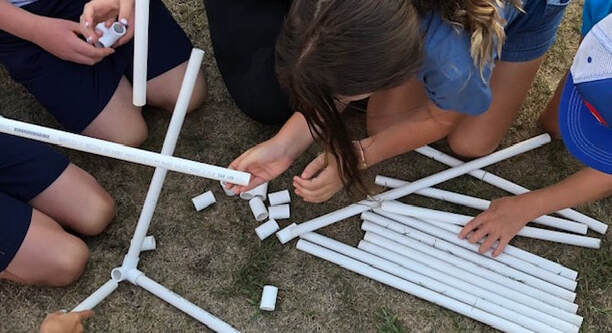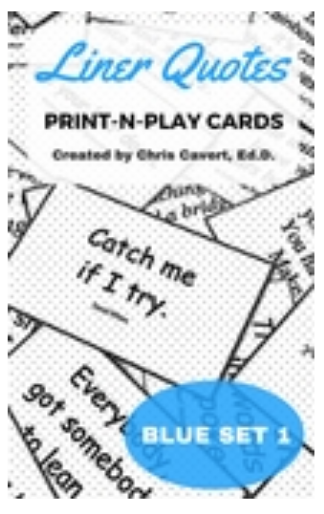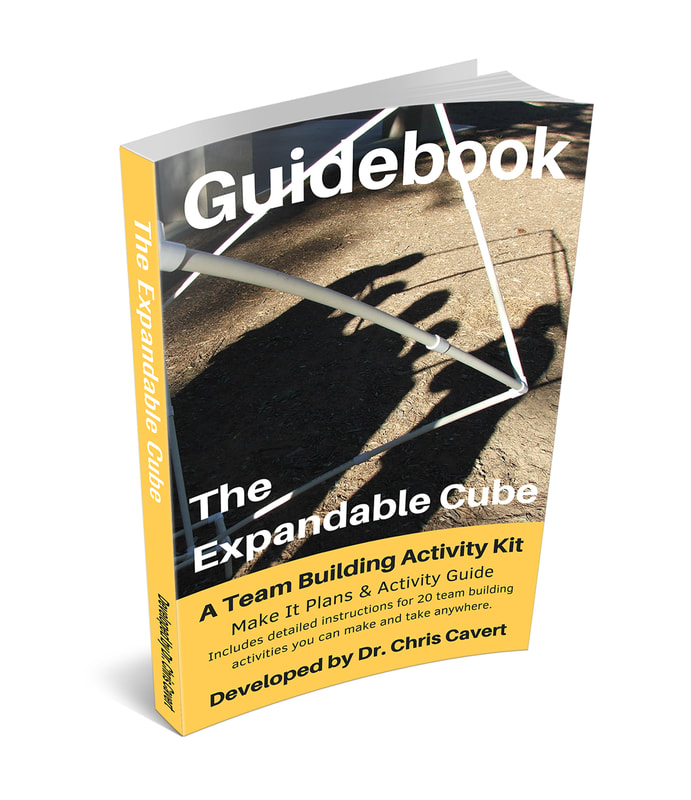Recently, I got to do some team building with some 6th Graders during their first week of the new (2021) school year. One of the objectives was to explore how they worked together as a group and what they want to remember during the school year so they can be more successful together.
Years ago (with the blessing of, The Cube creator Earl LaBlanc) I developed The Expandable Cube. I took Earl's original hanging Cube creation (i.e., Floating Spider Web), added a few extra PVC connectors and ended up with 20 (so far) team building activities - everything fits into a yoga mat-sized bag. (You can find the The Expandable Cube Guidebook - building directions and activity instructions - at the FUNdoing Store.)
For my 6th grade group, I used 12 long tubes (1/2-inch by 24-inches), 12 short tubes (1/2-inch by 18-inches), 12 couplings (1/2-inch) and 12, 3-way corners (1/2-inch). All of these materials can be found at many of the big-box hardware stores in the States (the 1/2-inch 3-way corners can now be found with the PVC fittings in the plumbing section). NOTE: If you can't get your hands on PVC, use any other type of (larger) building materials you can get for this activity - the process should work the same.
I laid down all the PVC materials on the ground in one big pile.
Directions
Part 1: First Attempt - We circled around the PVC materials for the directions. I told them, "in a moment, but not yet," they would be challenged to build a cube using all the PVC materials provided - nothing could be left out and nothing else could be used. But first, we needed to spend a little time confirming what a cube was. Done.
Before they began, I reminded them to be careful about moving the tubes around - "You don't want to hit anyone in the face with the PVC tubes!" Then, I told them to begin. NOTE: I also timed the attempt, but I did not tell them I was timing it. No time pressure, just build a cube.
As is the case with this activity (with just about every K-12 group I ever do this with), some collapse right to the ground to get building. Others hover over them grabbing what they can and share ideas and some float around the outside of the group watching the chaos - never getting their hands on any of the PVC.
Part 2: Mid-Brief 1 - The Cube is built and we all stand around it. (Sometimes the three-dimensional structure is not a cube, so I require it to be fixed before we move on.) For this brief, I simply ask:
When you do a group project for a class, what do you like to see happen from your group-mates?
Part 3: Second Build - Now, I challenge the group to build the cube again and this time, "do your best, as a group, to include all the components of group work you like to see." Before they can begin, I ask them to take the cube apart so that all the pieces are disconnected. While they are doing this, they are free to plan their next build attempt.
Before they can start the second build I ask them to explain their plan to me. I compare their plan to the components of group work they developed. If something is missing we work together to incorporate it. When the plan aligns with the list, I tell them they can begin. NOTE: Again, I'm timing this attempt, but I don't tell them.
Part 5: Third Build - I tell the group they have another chance to build the cube. This time it will be for a grade. I share the two times I have for them from the first and second builds and then ask them how fast they can build it this next time.
Now, with your best intuitive educated guess, you need to decide what grade you will give them for the time they propose. You might think the time is okay, but they could do better, so you say you'll give them a 'B' for that time. Now, as in most cases, groups want the 'A' so they propose another (lower) time. This is a nice chance to bring up the concept of negotiation and how it works. As the 'teacher' you are evaluating their work and setting some expectations for growth and excellence. Something to strive for. Then, of course, there can be re-negotiation. In the end, set a time the group will try to meet or exceed (or, fail to meet).
Before the third build, the cube is dismantled and the group must share it's plan with me so I can evaluate the group work components they are working towards. When all is ready, I say, "GO" and officially start and stop the time.
Part 6: Final Debrief - When I get to this point with my group, we've had some good briefing time. So, I don't plan to spend too much time here. I simply ask, "If you can remember and use the group work components you came up with, during group projects this year, what are some of the outcomes you can predict?" NOTE: It's good to be realistic here as well. If no one points out any of the possible struggles that occur in group work, no matter how well they plan things out, be the voice of reason and ask them to consider what else could happen and what will they plan to do about the mishaps. And, be sure to write this stuff down and get it to their teacher (unless of course, you are their teacher!).
All the best,
Chris Cavert, Ed.D.
P.S. And to all the teachers out there, thank you for what you do. The world truly needs you!







 RSS Feed
RSS Feed